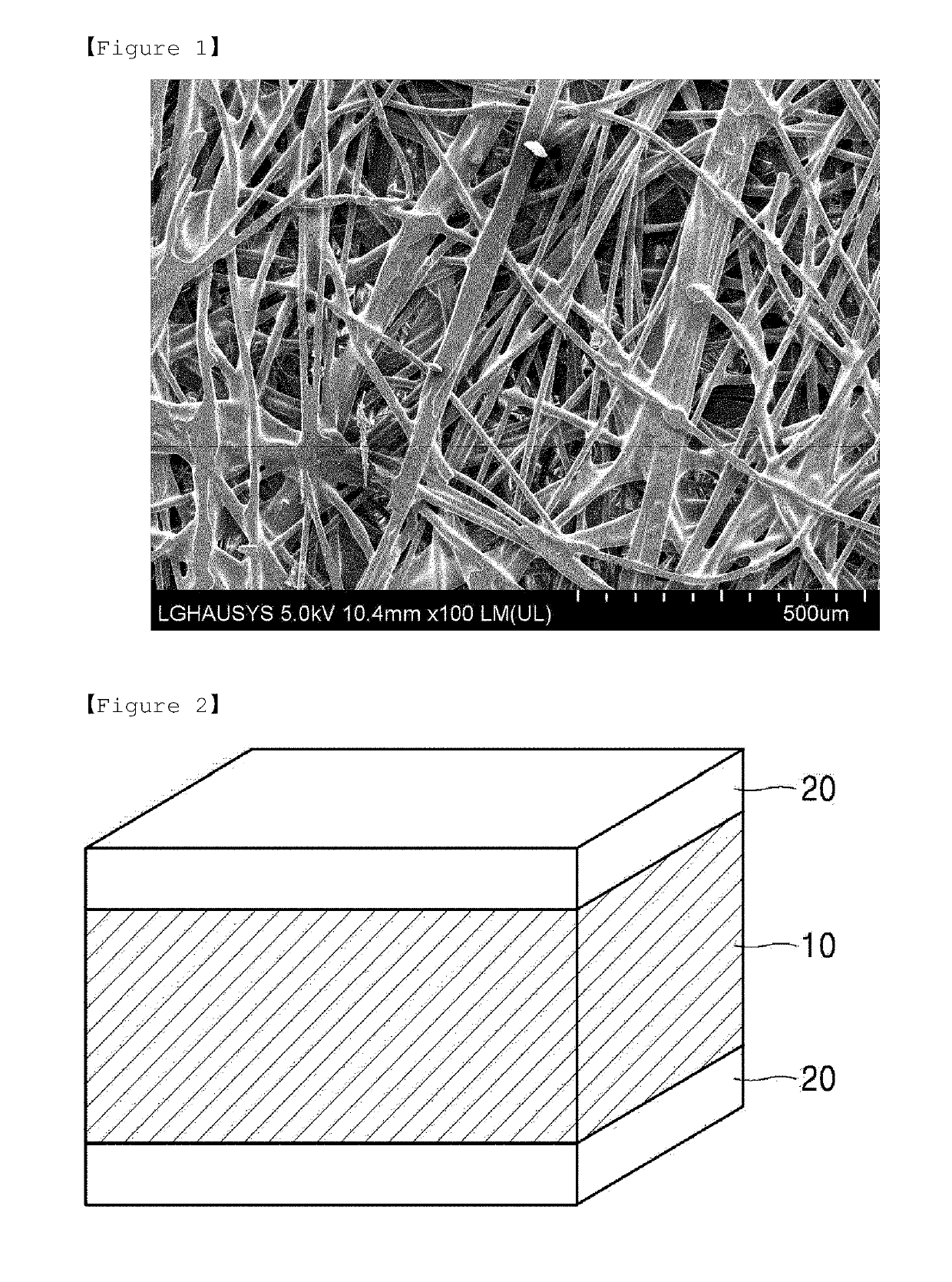Molded Object And Method For Manufacturing the Same
a technology of molded objects and wet processes, applied in the field of molded objects, can solve the problems of low hardness, easy bending of objects, and low density of objects manufactured using wet processes, and achieve the effects of enhanced properties, small weight change, and high density
- Summary
- Abstract
- Description
- Claims
- Application Information
AI Technical Summary
Benefits of technology
Problems solved by technology
Method used
Image
Examples
example 1
[0126]After preparing a polyethylene terephthalate (PET) fiber (Toray Chemical Inc., RPF, fineness 4 denier, fiber length 51 mm) and a sheath-core type PET fiber in which a sheath part is a non-hygroscopic resin (Toray Chemical Inc., EZBON-L, fineness 4 denier, sheath part melting point 164° C., fiber length 64 mm), these were mixed in a weight ratio of 30:70.
[0127]The mixed fiber went through carding using a roller carding machine, and thermally bonded for 10 seconds at a temperature of 190° C. using a heating press to prepare a non-woven fabric.
[0128]After installing the non-woven fabric on 6 unwinding devices, the 6 non-woven fabrics were introduced to a preheating chamber having an inside chamber temperature of 180° C., and then preheated for 3 minutes.
[0129]After that, the non-woven fabrics were transferred to a double belt press at a rate of 5 m / minute. Herein, a heating temperature of the double belt press was 180° C. and the pressure was 5 MPa, and heating / pressurizing treat...
example 2
[0130]A molded object was manufactured in the same manner as in Example 1 except that the polyethylene terephthalate (PET) fiber and the sheath-core type PET fiber in which a sheath part is a non-hygroscopic resin were mixed in a weight ratio of 50:50.
example 3
[0131]A molded object was manufactured in the same manner as in Example 1 except that a sheath-core type PET fiber in which a sheath part is a non-hygroscopic resin (Toray Chemical Inc., EZBON-L, fineness 4 denier, sheath part melting point 110° C., fiber length 64 mm) was used.
PUM
| Property | Measurement | Unit |
|---|---|---|
| apparent density | aaaaa | aaaaa |
| tensile strength | aaaaa | aaaaa |
| flexural strength | aaaaa | aaaaa |
Abstract
Description
Claims
Application Information
 Login to View More
Login to View More - R&D
- Intellectual Property
- Life Sciences
- Materials
- Tech Scout
- Unparalleled Data Quality
- Higher Quality Content
- 60% Fewer Hallucinations
Browse by: Latest US Patents, China's latest patents, Technical Efficacy Thesaurus, Application Domain, Technology Topic, Popular Technical Reports.
© 2025 PatSnap. All rights reserved.Legal|Privacy policy|Modern Slavery Act Transparency Statement|Sitemap|About US| Contact US: help@patsnap.com


